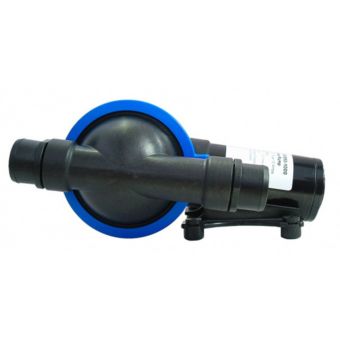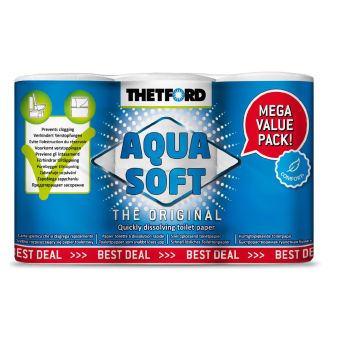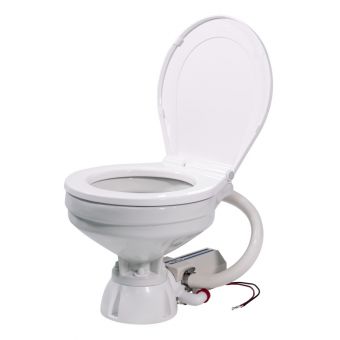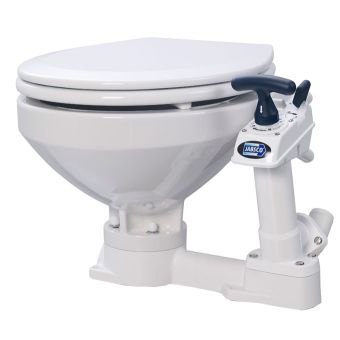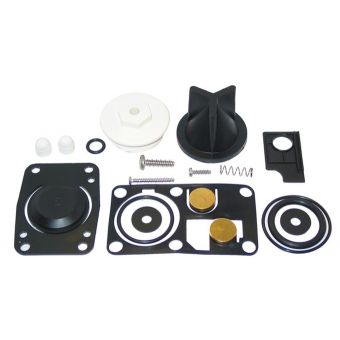For obvious reasons, servicing a toilet is a job most of us would rather avoid. However, not maintaining the toilet (or ‘head’, if you’re using nautical speak) on your boat can lead to big problems down the track. In fact, a few simple steps can really improve the toilet’s performance and there is easy preventative maintenance that you can carry out to prolong its use.
Here’s our guide to looking after your heads:
SIMPLE DOS AND DON’TS
Prevent issues with your toilet by following these simple rules:
- DO use toilet paper designed for marine toilets. This will break down easily and make blockages less likely.
- DO use a dedicated marine toilet cleaner. Bleach is not only terrible for the marine environment, but it will also break down the seals inside the toilet and cause them to them fail.
- DO put some fresh water in the bowl and flush it through the system before you leave the boat. This will stop the bacteria and other microorganisms in seawater from causing a smell.
- DO check seacocks and pipes when the boat is out of the water, as calcification can cause narrowing which increases the chances of a blockage.
- DON’T try to force the handle if you have a blockage. You’re more likely to crack the toilet base than fix the problem.
- DON’T leave water in the bowl over winter if there’s a risk that it could freeze and crack the bowl.
BASIC SERVICE
A basic service on a manual toilet is something that you can carry out yourself. It takes about 20 minutes and all you’ll need is a screwdriver, an adjustable spanner, rubber gloves and a bowl of warm soapy water. Cleaning the components will keep your toilet working well for years. Products such as the Jabsco Manual Service Kit contain replacements for seals and valves that might need to be switched out.
FULL SERVICE
A full service on a marine toilet usually involves replacing the pump. However, it’s often easier than a basic service because you can replace the whole unit which doesn’t involve dismantling everything. We recommend doing this every 5 to10 years, or if the pump is showing signs of cracking or scoring on the inner cylinder.
As part of a full service, it’s also a good idea to replace your hoses. Plus, if your toilet is looking a little ‘well used’, a new seat and lid is an easy upgrade and can make a real difference to your vessel’s ‘smallest room’.
TROUBLESHOOTING
Most components of a marine toilet can be bought individually, so if one fails due to damage or a blockage, it’s useful to be able to figure out exactly what’s broken. Here are a few common issues:
-
Handle won’t go down
Check your outlet valve and outlet pipes for a blockage. If this happens on the wet bowl setting, but not the dry bowl, it could be a blocked inlet. -
Handle won’t raise
This is probably a blockage in the base of the toilet, between the bowl and the pump. Remove and inspect the pump. If this happens on the wet bowl setting, but not the dry bowl, it could be a blocked inlet. -
Handle moves, but water won’t drain
This is usually an issue with either the one-way valve on the pump exit or the base valve at the bottom of the pump. -
Handle moves but no water comes into the toilet
Remove the top of the pump and inspect the large, flat rubber valve. -
Water comes out of the top of the pump when the handle is raised
Check the ring seal at the top of the cylinder. -
Toilet fills up with water over time
The most likely cause of this is the large flap valve at the base of the pump. However, check the one-way valve on the pump outlet as well.
Do you have any questions?
Please, contact our friendly team on 0800 102041 or email: website@burnsco.co.nz
We provide general information on products, not personal advice. Always seek the help of a relevant tradesperson if you have a technical query.


